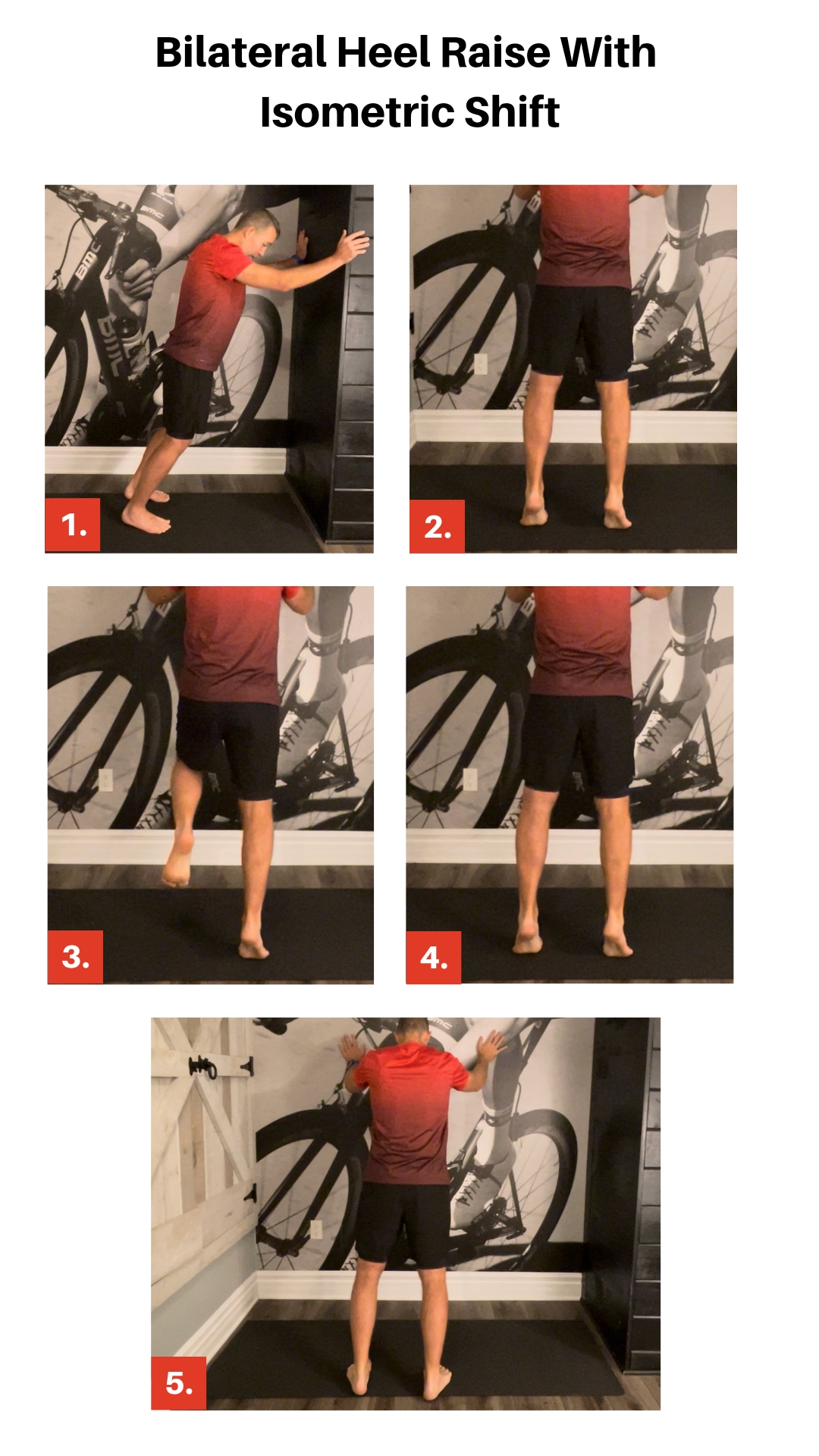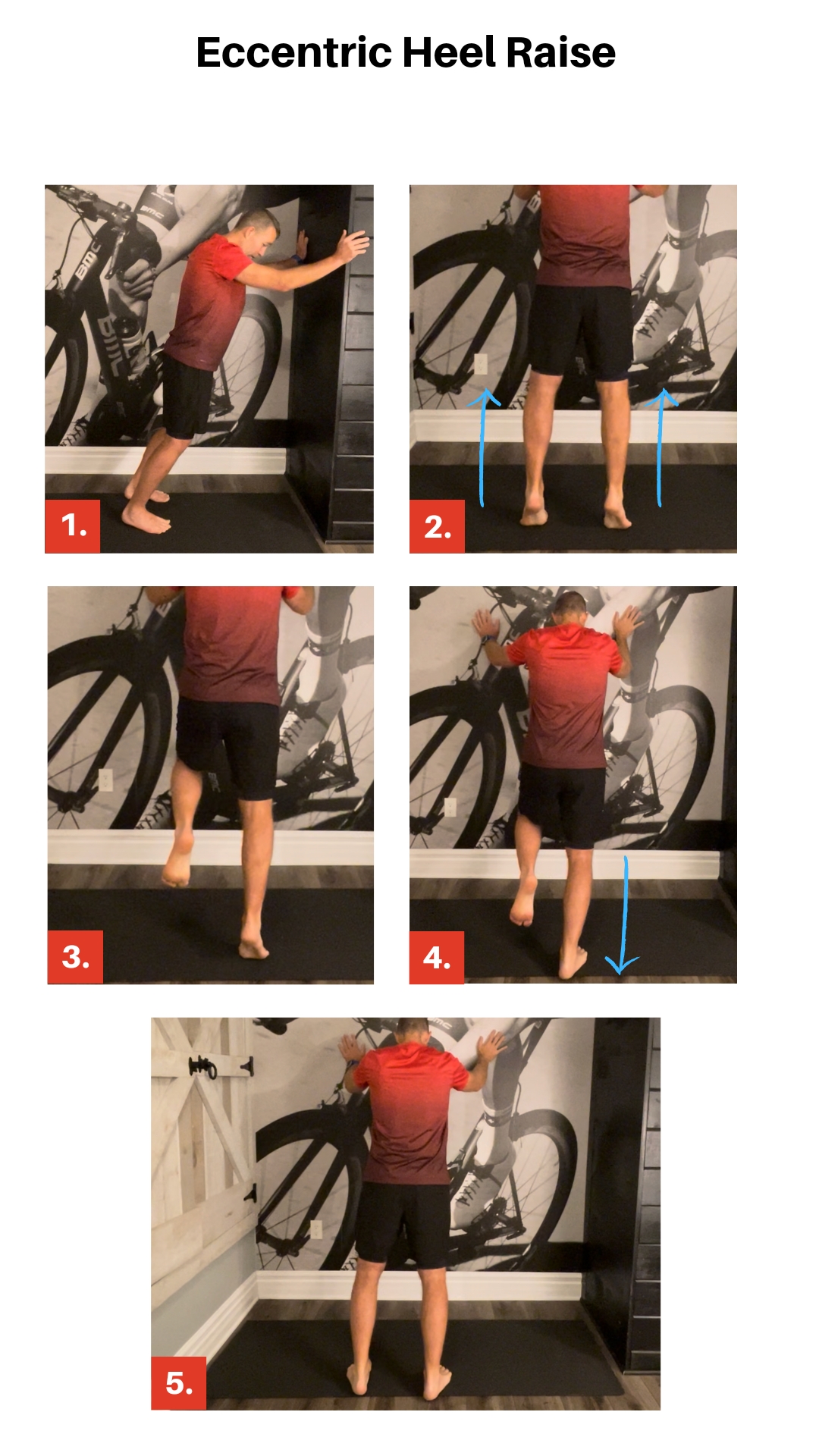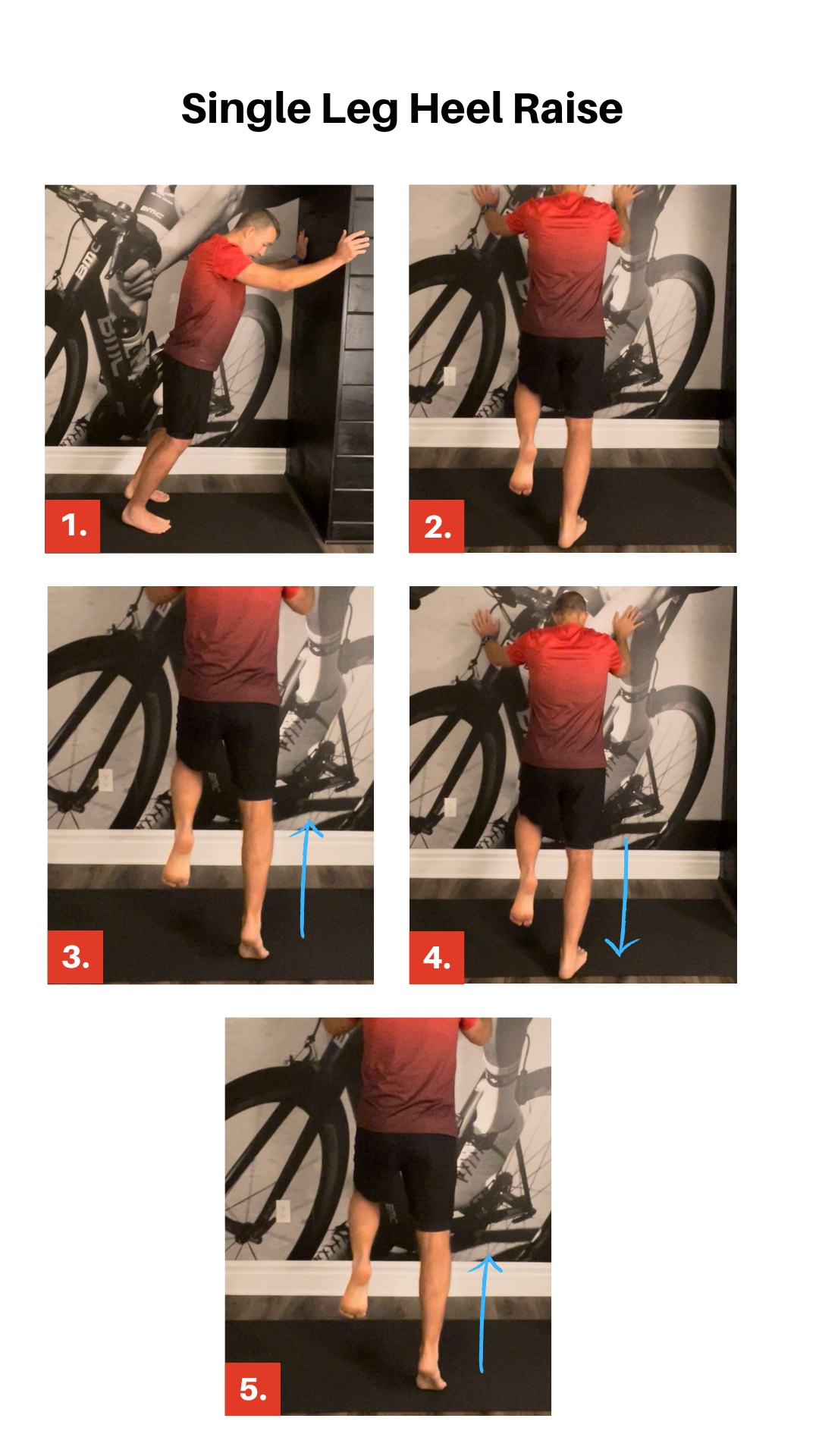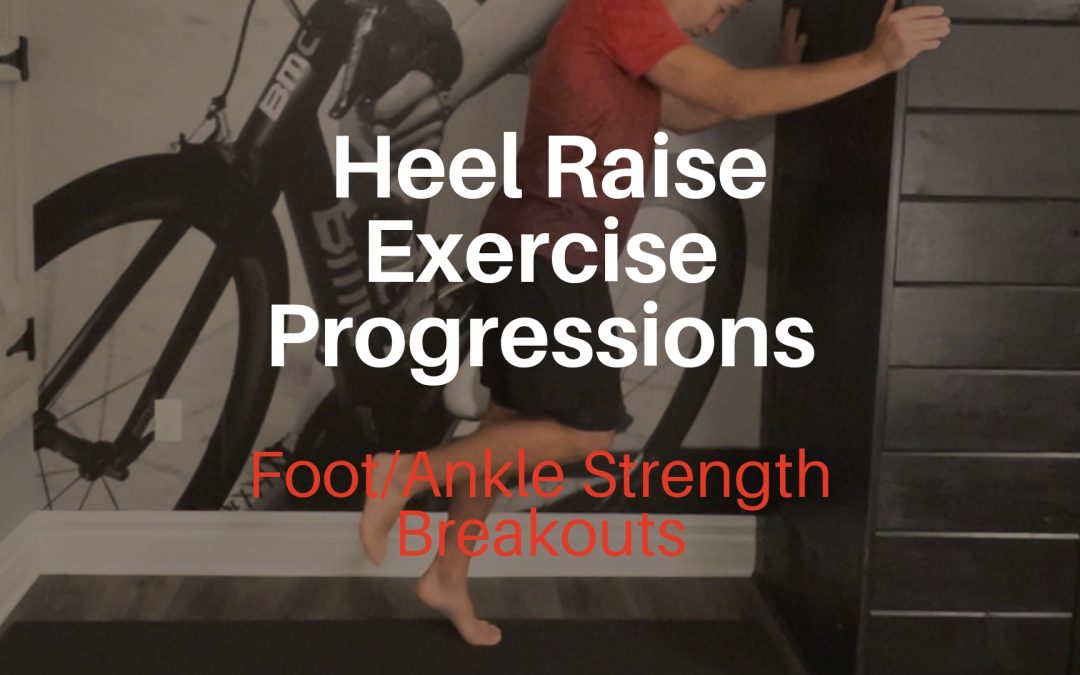Heel Raise Exercise Progressions
Heel raises are really one of the most quintessential exercises for the foot and ankle. From a tissue healing and rehabilitation perspective, it’s a critical exercise for conditions like achilles, tibialis posterior, or even peroneal tendinopathy, as well as with common foot conditions like plantar fasciitis.
And really, with any mechanical foot or ankle problem, or really any lower extremity problem for that matter, it a key exercise that facilitates proper function of the foot and ankle. Because a heel raise represents and trains the push-off phase of walking or running gait.
But with these exercises there are a few important things to keep in mind.
First, whether our focus is on building strength or endurance, or if our goal is to rehabilitate an injured achilles tendon or plantar fascia, the primary object is to create progressive force and progressive load though the injured tissue itself, or at the muscles of the foot and ankle.
So we need to get the dose and effort right for each client or patient. If the exercise is too easy it won’t provide the desired adaptation stimulus. But if it’s too hard it will affect the quality of the exercise and may even flare-up the condition.
That is why when it comes to strength or loading exercises, I like to think of them as, and organise them in Progressive Exercises Tracts. These tracts are essentially a group of the same or similar movements arranged in order of increased difficulty or increased loading demands.
This allows us to easily find the right effort level for each patient. It helps us to know where to start with each patient. But it also helps us to know where we’re going. As one exercise becomes too easy we can easily progress the patient or client to the next exercise in line.
Also, as these progressions are just slight variations on an existing theme, the patient doesn’t have to learn a completely new movement. And finally, as each progression represents just a small increase in loading and physical demands it minimises the chances of flaring the condition.
So with that said, let’s move onto the 4 exercises that make up the progression.
Make Exercises Prescription Easier For You And Your Patients
And just as one last reminder, remember if you are a MRC subscriber and you use our exercise prescription software, you can find this progression in our Exercise Library. You can either search for each exercise by name in the Library itself, or you can find it in the Exercise Groups section under the title: Foot/Ankle Strength Progressions: Heel Raise Progression

To perform the exercise:
- Begin from a standing position while leaning against a wall. Lean into the wall and bend your knee to bring your heels off the ground.
- Slowly raise both heels up into the air.
- Hold the heels up for 3-5 seconds, then slowly lower your heels down. As you lower you should feel a stretch in the calf muscles but your heel should not touch the floor.
- Perform 3-5 sets of 10-15 repetitions (or to fatigue).

To perform the exercise:
- Begin from a standing position leaning against a wall. Lean into the wall and bend your knee to bring your heels off the ground.
- Slowly raise both heels up into the air.
- Shift your weight onto one leg and hold for 5-10 seconds.
- Now bring your foot back to the ground so your weight is held on both legs.
- Slowly lower your heels down. As you lower you should feel a stretch in the calf muscles but your heel should not touch the floor.
- Perform 3-5 sets of 10-15 repetitions (or to fatigue).

To perform the exercise:
- Begin from a standing position leaning against a wall. Lean into the wall and bend your knee to bring your heels off the ground.
- Slowly raise both heels up into the air.
- Shift your weight onto one leg.
- Slowly lower down towards the floor on your single leg. As you lower you should feel a stretch in the calf muscles but your heel should not touch the floor.
- Slowly lower your heels down. As you lower you should feel a stretch in the calf muscles but your heel should not touch the floor.
- At the bottom of the motion put your other foot back on the floor.
- Perform 3-5 sets of 10-15 repetitions (or to fatigue).

To perform the exercise:
- Begin from a standing position leaning against a wall. Lean into the wall and bend your knee to bring your heels off the ground.
- Lift one leg off the floor so you are in a single leg stance position.
- Slowly raise your heel off the floor.
- Hold for 3-5 seconds then slowly lower down towards the floor on your single leg. As you lower you should feel a stretch in the calf muscles but your heel should not touch the floor.
- Perform 3-5 sets of 10-15 repetitions (or to fatigue).
Heel Raise Exercise Progression: Programming and Progression Criteria
Sets and Reps
So now that we’ve reviewed the exercises themselves, let’s take a moment to talk about programming and progression criteria. First, as we’re trying to target strength and/or improvements in connective tissue quality and capacity we need to make sure we’re creating a sufficient exercise challenge – so here we will typically prescribe 3-5 sets per session.
And instead of prescribing a specific number of reps, I will have patients perform exercises to fatigue. So in other words I tell patients to perform as many as they can, but not to go past the point where their form breaks down or they feel they are no longer in full control of the movement, or past the point where the exercises becomes painful.
I also want my patient to keep track of their numbers – because that is largely how I am going to determine when they need to progress to the next exercise, or in some cases when we may need to regress.
What I am typically looking for here is I want each patient to be able to work within sets of 8-15 repetitions. If the exercise flares up the condition, or they can’t perform at least 8 repetitions I will likely regress the exercises. Likewise, when they can easily perform 12-15 repetitions I will move them to the next progression.
Exercise Frequency
In terms of frequency, remember we also need to build in adequate recovery. So we need a minimum of 1 day between exercises sessions. Which means I’m going to have them perform these exercises 2-3x/week.
I should also point out here that these exercises aren’t going to be the only ones they are performing. So within this strength session these heel raise progression may be part of a general foot/ankle or even a lower extremity strengthening routine or circuit.
Planning A Week
Lastly, let’s talk about planning and programming for a week. While these strength exercises are important, these patients will also be performing mobility and control exercises – which are typically done on a daily basis.
Just as an example here, we may be using this heel raise progression for a foot and ankle patient, so I would also be having these patients performing our Basic or Advanced Foot/Ankle Mobility and Control Movement Sequence 1x/day, or maybe even 2x/day. Then, 2-3x/week I will also plug in these strength-endurance exercises to their rehab or conditioning program.







